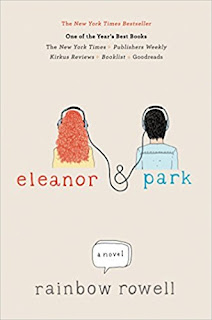Today's post is a post about how to outline your novel quickly and easily! Extremely quickly.
For the people who do not know, I am currently participating in NaNoWriMo, aka write 50k in a month. I'm only at 20k now, but I plan to pull several 'writing days' to get it done.
Why am I only at 20k? I forgot to outline and now have no idea what's happening next. Which inspired me to make a post on outlining!
STEP ONE: An idea. This can be anything from 'romance about a book lover and a book hater' to 'gnomes attempting to take over the world'. All you need is one or two sentences that will set up the plot.
STEP TWO: The problem. Perhaps the book lover and book hater keep fighting over whether books are good or bad, or the gnomes can be killed with chocolate chip cookies.
STEP THREE: The resolution. The book lover and book hater (I don't actually know how to happily resolve that one) break up and become much happier. The gnomes convince the world to like snickerdoodles (which are amazing) instead of chocolate chip cookies.
STEP FOUR: How to get to the resolution. One gnome starts a food blog and only posts recipes for cookies that aren't chocolate chip.
STEP FIVE: Resolution fleshing and beginning of characters. The gnome who starts the food blog will be named Shamil Raunor, sixteen, and lacking friends who like cooking. So why not start a blog? She won't know about the plan to take over the world (government officials only) but she, like all gnomes here, is allergic to chocolate chip cookies. So to make the book interesting before the take over the world plan is revealed, her parents will want her to be a doctor, not a chef. They will think the food blog is an act of rebellion and try to get her to shut it down.
STEP SIX: What will happen in each chapter? Try to do a problem per two chapters so you can have a mini-cliffhanger. However, the first chapter is usually good to just set up the characters and plot.
Chapter One: government meeting about taking over the world (very vague).
Chapter Two: set up Shamil and her life (relate it back to cooking somehow) (should have a conversation with her parents about being a chef).
Chapter Three: Shamil starts a food blog without her parents knowing. Shamil cooks some stuff and her parents get supsicus (everyone eats take out here).
Chapter Four: Shamil's parents remove the oven from their house. So she starts a new blog series on stuff you can make in a mircrowave.
Chapter Five: Shamil's blog becomes famous. Shamil finds her blog in many journals and ends up convincing a friend to cook.
Chapter Six: the government hears about this blog and posts a comment about doing cookie recipies.
Chapter Seven: Shamil can't bake. So she learns to fulfful the anyonmous comment's wishes.
Chapter Seven: Shamil can't bake. So she learns to fulfful the anyonmous comment's wishes.
Chapter Eight: Shamil's parents learn about this blog and shut it down. Shamil manages to start a new blog and leave a link to the new one on the old one.
Chapter Nine: the cookie recipies become a succuess. The government proceeds to invade.
Chapter Ten: Shamil's parents, which have wanted the gnomes to invade for aa while, decide they are for the blog after all.
BAM! Novel! All I would have to do is write it! And autcully, I have to flesh the characters....
STEP SEVEN: flesh the characters. Character questionaires and the Meyer-Briggs test are good for this.
STEP EIGHT: do all research you need to do. Research places, research races, research food, research cutltures, research techy stuff.
STEP NINE: write the book!
-Sarah



